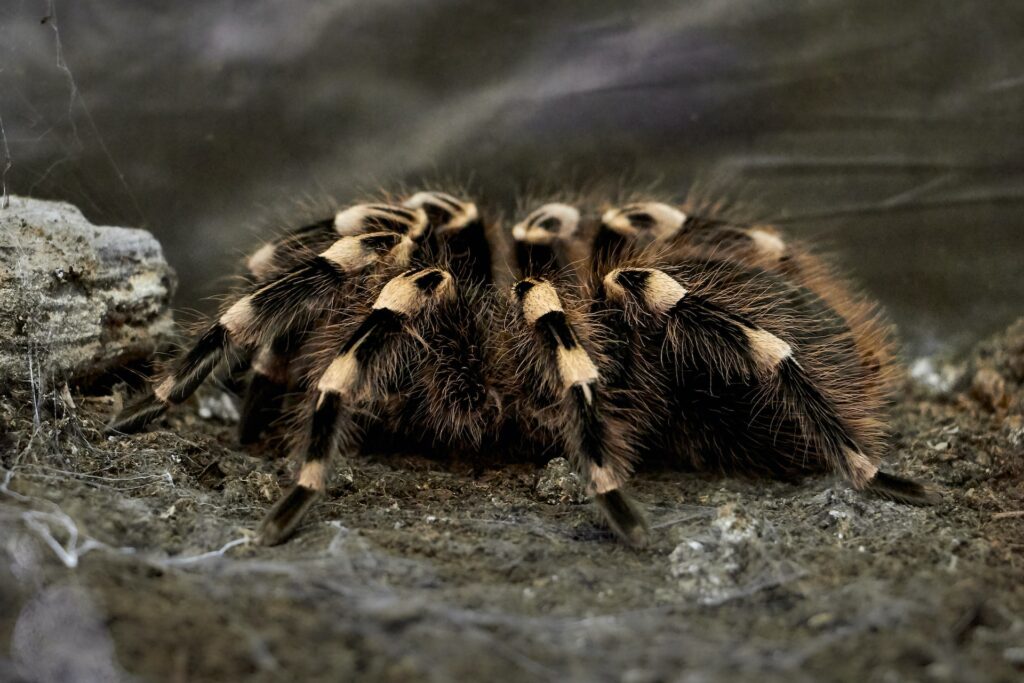Introduction: Creepy crawlies, often overlooked and misunderstood, play a crucial role in our ecosystem. From spiders and insects to centipedes and worms, these tiny creatures are part of the intricate web of life on our planet. This article aims to shed light on the diverse and intriguing world of creepy crawlies, exploring their significance, misconceptions, and their place in popular culture and mythology.
What are Creepy Crawlies?
Creepy crawlies are a diverse group of small creatures that often evoke fear and fascination in humans. They encompass various species, including spiders, insects, centipedes, millipedes, worms, snakes, rodents, and reptiles. These organisms are characterized by their small size, many legs, and the ability to crawl or slither.
Types of Creepy Crawlies (Spiders) (Insects)
Spiders, known for their intricate webs and venomous bites, are arachnids that exist in various shapes and sizes. They are skilled hunters, preying on insects and other small creatures, contributing to natural pest control.Insects make up the largest group of creepy crawlies, with over a million known species. Bees, butterflies, ants, beetles, and many more fall under this category. Insects are essential pollinators, responsible for facilitating the reproduction of numerous plant species.
Centipedes and Millipedes
millipedes belong to the class Myriapoda using their venomous fangs to hunt insects and other small animals. Millipedes, on the other hand, are detritivores, playing a vital role in breaking down decaying plant matter.
Worms and Snakes
Worms are crucial for soil health as they aerate the ground and enhance nutrient circulation. Snakes, although often feared, play a vital role in controlling rodent populations and maintaining the balance of certain ecosystems.
Rodents and Reptiles
Rodents, such as mice and rats, are part of the creepy crawlies category and can be both pests and crucial contributors to the ecosystem. Reptiles like geckos and lizards help control insect populations, ensuring ecological stability.
Fascinating Facts About Creepy Crawlies
The silk produced by spiders is remarkably strong and elastic, with some webs even stronger than steel of the same thickness.
Ants are highly organized social insects that communicate through pheromones, enabling them to work as a unified colony.
Some centipedes can deliver venomous bites, which serve both for hunting and defense.
Millipedes have the ability to produce toxic compounds as a defense mechanism against predators.
Earthworms can consume their body weight in organic matter daily, playing a significant role in decomposing organic waste.
The Role of Creepy Crawlies in the Ecosystem
Creepy crawlies are vital for maintaining ecological balance. They serve as pollinators, predators, scavengers, and decomposers, all of which contribute to the proper functioning of ecosystems. Without these tiny creatures, the delicate web of life would be disrupted, leading to adverse effects on both flora and fauna.
Creepy Crawlies and Human Interaction:Fear and Phobias
Many humans harbor fear or phobias of certain crawlies. Arachnophobia (fear of spiders), entomophobia (fear of insects), and ophidiophobia (fear of snakes) are prevalent examples. Understanding and overcoming these fears are essential for coexisting harmoniously with these creatures.
Pest Control and Management
While some crawlies provide essential services, others can be pests when they encroach on human living spaces or damage crops. Finding a balance between managing pest populations and preserving beneficial species is crucial for sustainable cohabitation.
The Benefits of Creepy Crawlies
Pollination: Insects and some other crawlies are crucial for pollinating flowering plants, ensuring food production for both humans and wildlife.
Natural Pest Control: Many crawlies act as natural predators, controlling insect populations and reducing the need for chemical pesticides.
Nutrient Recycling: Decomposers like worms and some insects play a significant role in breaking down organic matter, enriching the soil with nutrients.
Biodiversity Support: The existence of diverse crawlies indicates a healthy ecosystem, supporting overall biodiversity.
Creepy Crawlies in Popular Culture and Mythology
Throughout history, crawlies have been depicted in various ways in different cultures.They have been associated with both positive and negative symbolism, often representing attributes like patience, danger, transformation, and resilience. From ancient myths to modern horror stories, these creatures continue to capture the human imagination.
Protecting Creepy Crawlies and Biodiversity
Conserving crawlies and their habitats is vital for the well-being of our planet. Implementing sustainable agricultural practices, reducing pesticide use, and preserving natural areas are some steps towards safeguarding these essential creatures and maintaining biodiversity.
Unusual Creepy Crawlies from Around the World
The world is home to some extraordinary crawlies. From the vibrant peacock spider of Australia to the giant weta of New Zealand, these unique creatures showcase the wonders of evolution and adaptation.
Creepy Crawlies and Science
Researchers and scientists continue to study crawlies to unravel their secrets. Their unique behaviors, anatomy, and ecological roles offer valuable insights into the functioning of the natural world.
Misconceptions About Creepy Crawlies
Despite their significance, crawlies are often misunderstood and misrepresented. Separating fact from fiction is essential to appreciate and protect these creatures appropriately.
Creepy Crawlies in Art and Literature
crawlies have been a recurring theme in art and literature, inspiring awe and fear alike. From classic literature to contemporary art, their influence on human creativity is undeniable.
Sustainable Practices and Creepy Crawlies
Promoting sustainable practices benefits both humans and crawlies. Embracing organic farming, minimizing single-use plastics, and adopting eco-friendly habits contribute to a healthier environment for all living beings.
Conclusion
Creepy crawlies, despite their small size, wield immense power in the natural world. From pollination and pest control to nutrient recycling and biodiversity support, these tiny creatures play a significant role in maintaining ecological balance. It is crucial for humans to appreciate their importance, protect their habitats, and foster coexistence for a sustainable future.

